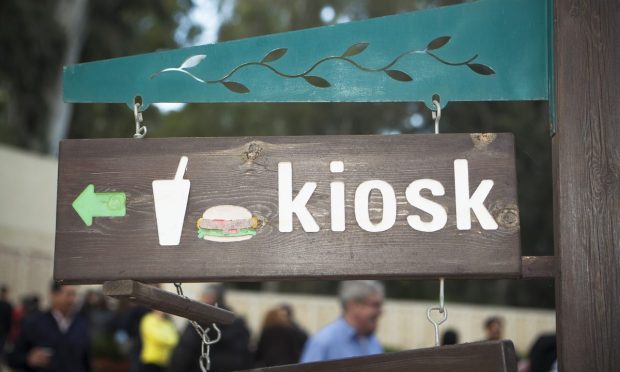Live Event Venues Reduce Audience FOMO With Frictionless Concessions

Live event concessions are moving well beyond the traditional hot dog stand experience. Increasingly, tech companies are removing friction from the purchasing journey, solving one of the key issues of the concessions model — event-goers’ anxiety about missing out what is happening on the field or the stage due to long wait times and slow ordering and payment processes.
For instance, last month, NFL team the Detroit Lions, in partnership with restaurant and hospitality company Levy, telecommunications company Verizon and retail artificial intelligence (AI) solutions provider AiFi, opened a frictionless checkout food and beverage shop at their Ford Field stadium.
“I think it helps a lot of different pain points,” Sandeep Satish, head of Levy and E15’s sports and entertainment analytics practice, told PYMNTS in an interview. “First and foremost is speed of service — we know that our guests want to get back to their seats to watch the game, the concert or the convention that they’re at, and it’s really important for us to figure out how can we do that that’s not the traditional concession stand model.”
The opening follows point of sale (POS) company Square’s initiative to offer “seamless commerce” at Los Angeles’ SoFi stadium, implementing contactless payment capabilities. Additionally, the New York Islanders’ UBS Arena, which opened in November, features mobile app ordering, self-service kiosks and grab-and-go marketplaces powered by Amazon’s Just Walk Out technology.
Related news: LA’s SoFi Stadium, Square Ink 10-Year Deal for Contactless Payments
NY Islanders Team With Fiserv for Contactless Payments at UBS Arena
Frictionless Takes Hold
This kind of checkout-free food collection is gaining traction within stadiums and without. Increasingly, major restaurant and grocery brands worldwide, from Tesco to Starbucks, are offering consumers the ability to pick items off the shelves and walk out, seizing on consumers’ desire to take the retail journey into their own hands.
While Satish offers a far from unbiased view on the matter, he relays that, even in early trials, consumers get onboard very quickly when they get over the shock of walking out without stopping to pay.
“They really love the technology,” he said. “Where we’ve launched this across the country, we continue to get feedback saying, ‘Wow, this is really cool.’”
Research from PYMNTS’ 2021 study, Today’s Self-Service Shopping Journey: The New Retail Expectation, created in collaboration with Toshiba, which featured a census-balanced survey more than 2,000 United States consumers regarding their shopping preferences, found that 28% of consumers had used self-service options to pay for their most recent store purchase, and 4% had used own-device checkout.
Read more: Consumers Want Self-Service Checkout Options But Rarely Get to Use Them
Frictionless technology takes the benefits that consumers look for in self-checkout options even further. The study found that a desire for speed was the number one reason consumers opted for self-service, followed by a wish to skip the wait in line. On the other hand, the most common reason given for using traditional checkout options with a store attendant was that it was the only option available.
Getting to Know the Audience
One of the major advantages of computer vision-powered frictionless checkout for retailers and restaurants is that it offers comprehensive insight into how consumers move through the store, and given that each transaction is processed digitally, it provides additional visibility into purchasing patterns.
“With a frictionless checkout market, all of a sudden, you can offer a lot more for the guests to meet a data driven demand — what do they want to buy?” Satish said.
For example, he recalled being surprised to see that consumers are tending more toward purchasing packaged products, especially for non-alcoholic beverages, which he attributes to the increasing availability of premium packaged options.
What’s in Store
In the kind of spaces where cashierless checkout is possible, Satish hopes that the method will account for 100% of purchases. Additionally, he expects that other food-selling formats will increasingly come to resemble this quick, contactless experience.
“You think about all the underutilized or unused use spaces in the stadiums and convention centers — how can we make a frictionless checkout experience even more simple?” he said.
For example, he noted that even along a wall, venues could install coolers, whereby consumers could tap their credit cards and withdraw an item, monetizing additional space. Additionally, he believes that this cashier-less payment process could extend to all of consumers’ in-venue activities, creating a unified frictionless experience.
“I think you’re going to see a couple of venues that will only be [frictionless] … where you have the ability to tap your credit card or tap your app before you even enter the stadium or venue,” he said. “Think about how powerful that’s going to be, where you can walk to whatever food hall, whatever concept, whatever merchandise store, grab what you want and walk back to your seat and really not worry about that process.”
